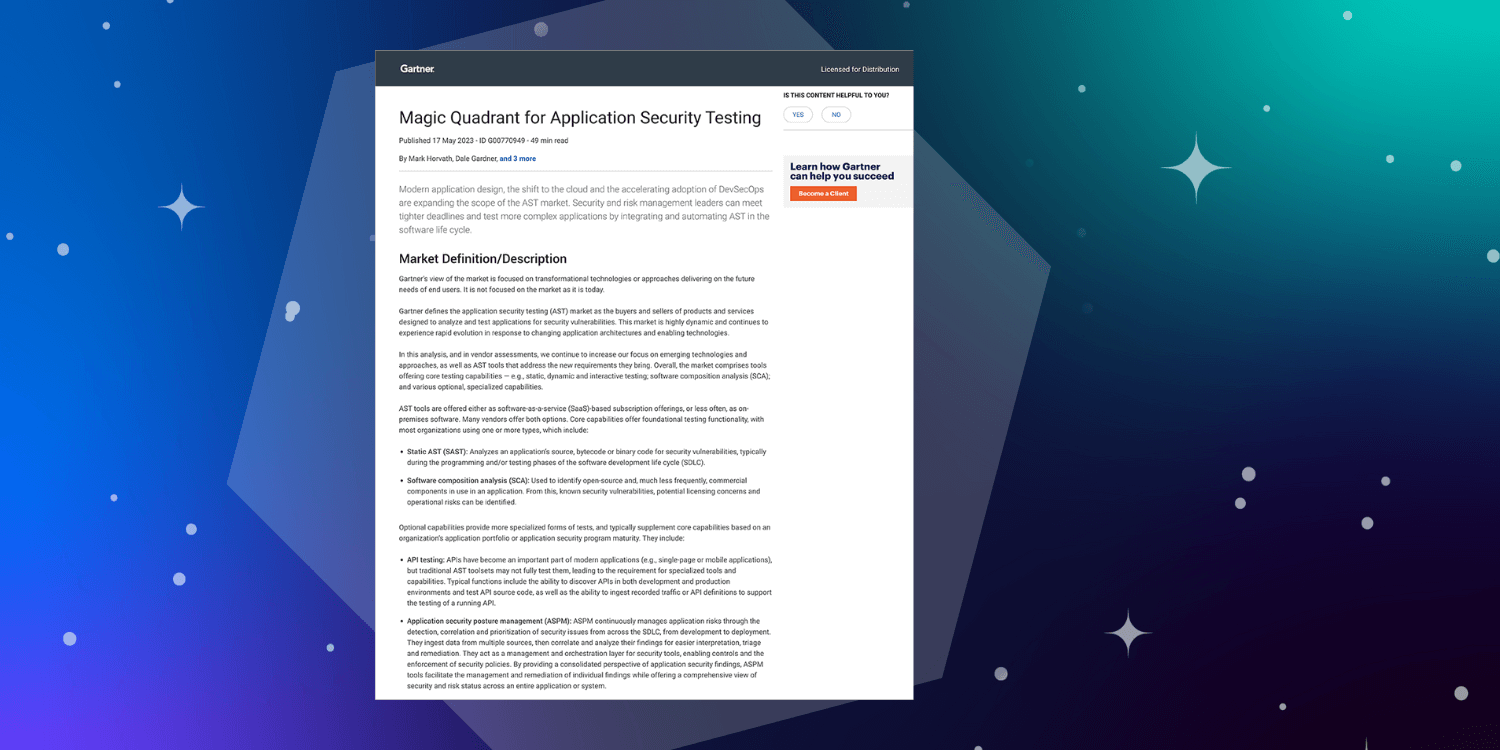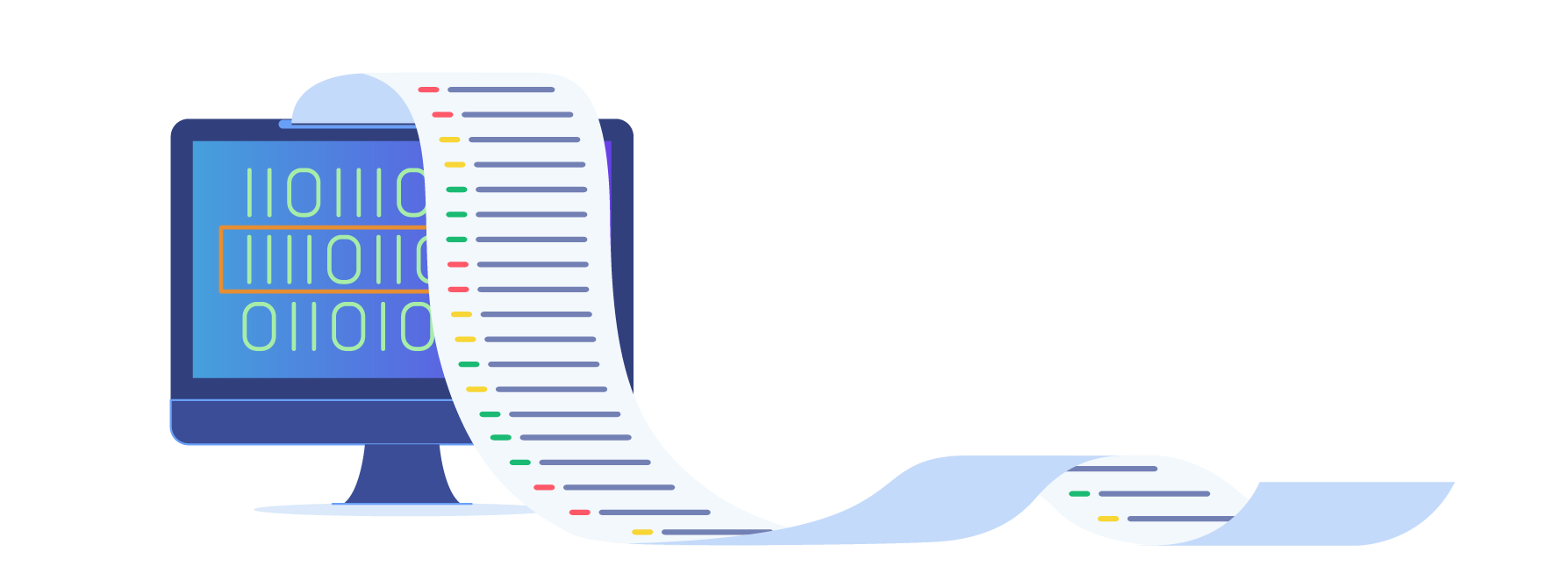We’re thrilled to announce that Sonatype has been named in the 2023 Gartner Magic Quadrant for Application Security Testing (AST). Gartner has identified software composition analysis (SCA) and software supply chain security, amongst other capabilities of application security testing. We’ve been recognized for our Ability to Execute and Completeness of Vision.
“Gartner observes that the evolution of the AST market is largely driven by the need to support enterprise DevSecOps and cloud-native application initiatives. Customers require offerings that provide high-assurance, high-value findings, while not slowing down development efforts unnecessarily. Clients expect offerings to fit into the development process at an earlier stage, with testing often driven by developers, rather than security specialists. As a result, this market evaluation focuses heavily on the buyer’s needs, including support for rapid and accurate testing of various application types and the ability to integrate into software delivery workflows with an increasing level of automation.” - Gartner
Sonatype has long been renowned for its industry leading open source insight stemming from its market-leading intelligence engine that has analyzed more than 120M open source components and continues to evaluate more than 4.7M components daily using AI and proprietary behavioral analysis. We’ve earned a solid reputation within the OSS community as maintainers of the Maven Central Repository, as well as the contribution of expertise by our team of more than 65 security researchers.
Over 2,000 organizations, including 70% of the Fortune 100 and 15 million developers, depend on our tools and expertise. We believe our platform's 2023 debut in the Gartner Magic Quadrant for AST underscores our capabilities that empower organizations to develop software fearlessly and accelerate innovation in an intensely competitive market.
Open source is used by 90% of companies, and there is an increasing regulatory and CISO interest in vulnerability management. For organizations that use open source or need to track and manage open source vulnerabilities, SCA is an excellent alternative or complement to existing measures. In today’s environment, tools addressing expanding risk are no longer optional. SCA delivers benefits tailed to unique use cases and is a necessity for any modern toolbox.
What’s the difference between SAST and SCA?
The primary difference between SAST and SCA is that SAST looks at source code for known vulnerabilities, while SCA identifies and analyzes binaries most specifically focused on open source components.
Think of SAST as a detective that investigates source code for sneaky vulnerabilities. While SCA is more like a quality inspector that checks ready-to-use open source components to ensure they’re safe for applications. Both work to keep software secure but have their own unique specialization. An organization may need one or both depending on its specific need or use case.
Building more secure software supply chains
Our experienced team of 65+ researchers has identified and remediated vulnerable OSS code for over a decade. They have analyzed over 120 million components, a staggering 40x more than our competitors. However, our capabilities aren’t only powered by a dedicated team. Automation plays a major role as well. Sonatype Repository Firewall employs machine learning systems to detect suspicious and malicious components, blocking them from infiltrating your organization’s development workflow.
In fact, Firewall’s proprietary AI models have identified and blocked over 115,000 malicious packages. This feature is essential for all of our customers, but it is particularly valuable for those still establishing a secure software development life cycle (SDLC).
But it’s not only security and development teams who benefit from our tools. Sonatype’s Advanced Legal Pack is designed to create a bridge between legal and development. It utilizes automation to immediately comply with open source licensing obligations like attributions and attestations and provides extensive legal data to legal reviewers.
Pushing innovation further
Sonatype remains dedicated to helping our customers manage software supply chains at scale. We will continue to build and improve upon tools that enable our customers to be more secure without sacrificing productivity.
Download the Gartner report for more insights on:
- The reasons why Gartner mentioned Software Composition Analysis capabilities as one of the core capabilities of Application Security Testing.
- Why SCA is used to identify open-source and, much less frequently, commercial components in use in an application.
- Compare a technology provider’s strengths and challenges with your specific needs.
Gartner, Magic Quadrant for Application Security Testing, Mark Horvath, Dale Gardner, Manjunath Bhat, Ravisha Chugh, Angela Zhao, 17 May 2023.
GARTNER is a registered trademark and service mark of Gartner, Inc. and/or its affiliates in the U.S. and internationally, and MAGIC QUADRANT is a registered trademark of Gartner, Inc. and/or its affiliates and are used herein with permission. All rights reserved. reserved.
Gartner does not endorse any vendor, product or service depicted in its research publications, and does not advise technology users to select only those vendors with the highest ratings or other designation. Gartner research publications consist of the opinions of Gartner’s research organization and should not be construed as statements of fact. Gartner disclaims all warranties, expressed or implied, with respect to this research, including any warranties of merchantability or fitness for a particular purpose.





